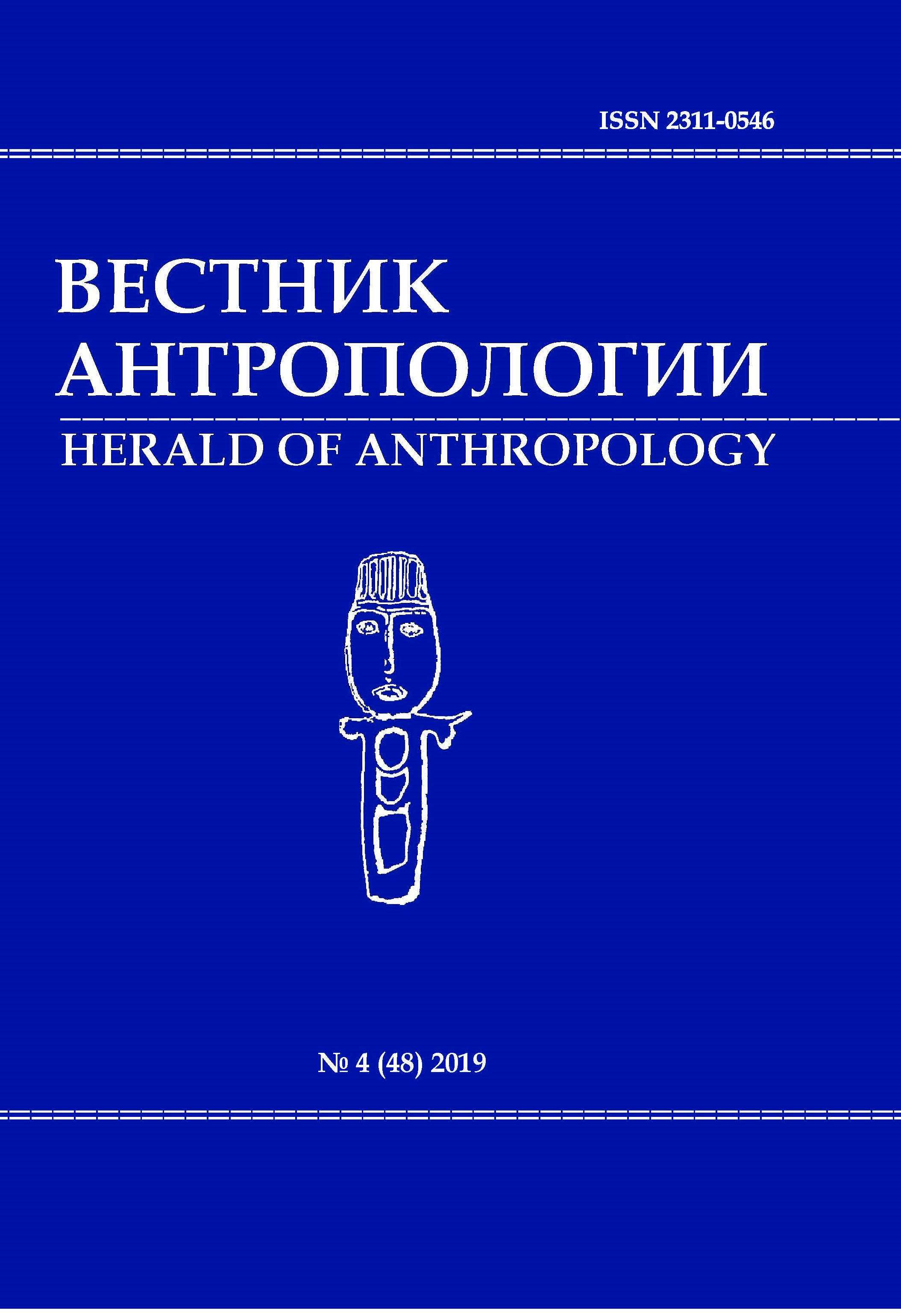Australian Aborigines: geographical variability of craniological features
DOI: 10.33876/2311-0546/2019-48-4/252-267
Keywords:
craniology, craniotype, tropids, the Australian aborigines, the migratory waveAbstract
This work is devoted to the study of craniological traits of Australian aborigines (male and female samples) and their geographical differentiation applying a special program of cranial traits. According to the craniological classification (Pestryakov, Grigorieva, 2004), native population of Australia belongs to the Tropid craniotype, i.e. is characterized by a relatively small size and long, narrow and relatively high form of the skull. The primary settlement of the Australian continent could only origin in the North. There are two contrasting craniotypes in Australia, which probably reflect the two main waves of the aboriginal migration across the continent. The skulls of the first migratory wave were larger and relatively low-vaulted. They are mostly characteristic of the aborigines of South Australia, who later also migrated to the north, to the arid zone of Central Australia. The second major wave is characterized by smaller high-vaulted skulls, which are now characteristic of the population of the north of the continent (Queensland and, especially, the Northern Territory and North-West Australia). The territory of the southeast of Australia (Victoria and New South Wales states) is the most favorable area for human living. The two main migratory waves mixed there, which led to the observed craniological heterosis. The craniological samples of western and northwestern Australia are also of mixed origin, but are more comparable to the Northern Territory groups. The Tasmanians are significantly different from the General Australian population in terms of craniology. This is especially true for the female sample. Perhaps the ancestors of the Tasmanians represented the very first settlement wave of the ancient Sahul continent, before the separation of the island from the mainland
References
- Alexejev, V.P. 1973. Craniological material from new Guinea, Indonesia and the Malayan Peninsula. Anthropologie, 201-248. Moravske Muzeum - Ustav Anthropos. Brno.
- Artyomova, O.Yu. 1987. Lichnost’ i sotsial’nyye normy v rannepervobytnoy obshchine. [Personality and social norms in an early primitive community]. Moscow: Nauka.
- Howells, W. 1937.Anthropometry of the natives of Arnhem Land and the Australian race problem. Papers of Peabody museum of American archaeology and ethnology. Harvard university, I Cambridge, Massachusetts: XVI.
- Hrdlicka, A. 1928. Catalogue of human crania in the United States national museum collectilns. Procceedings of the of the United States national museum. Washington: 71.
- Kabo, V. R. 1969. Proiskhozhdeniye i rannyaya istoriya aborigenov Avstralii [Origin and early history of Aboriginal Australia]. Moscow: Nauka.
- Margetts, B.M., Freedman. 1977. Morphometrics of Western Australians aboriginal skulls. Rec. West. Aust. Mus., 6 (1): 63–104.
- Milicerowa, Halina 1955. Crania Australica. «Panstwowe Wydawnictwo Naukowe». Wroclaw.
- Morant, G. 1927. A study of the Australian and Tasmanian skulls based on previously published previously published measurements. Biometrica. Vol. XIX. Part III–IV.
- Pestryakov, A.P. 2005. Avstraloidnaya rasa [Australoid race]. In Bol’shaya Rossiyskaya entsiklopediya (BRE). Moscow: I: 114.
- Pestryakov, A.P., O.M. Grigoriyeva. 2004. Kraniologicheskaya differentsiatsiya sovremennogo naseleniya [Craniological differentiation of the modern population]. In Rasy i narody. YEzhegodnik 30: 86–131. Moscow: Nauka.
- Roginskiy, Ya.Ya., M.G. Levin. 1978. Antropologiya [Anthropology]. Moscow: Vysshaya shkola.
- Rouz, F. 1989. Aborigeny Avstralii. Traditsionnoye obshchestvo [Australian Aborigines. Traditional society]. Moscow: Progress.





















